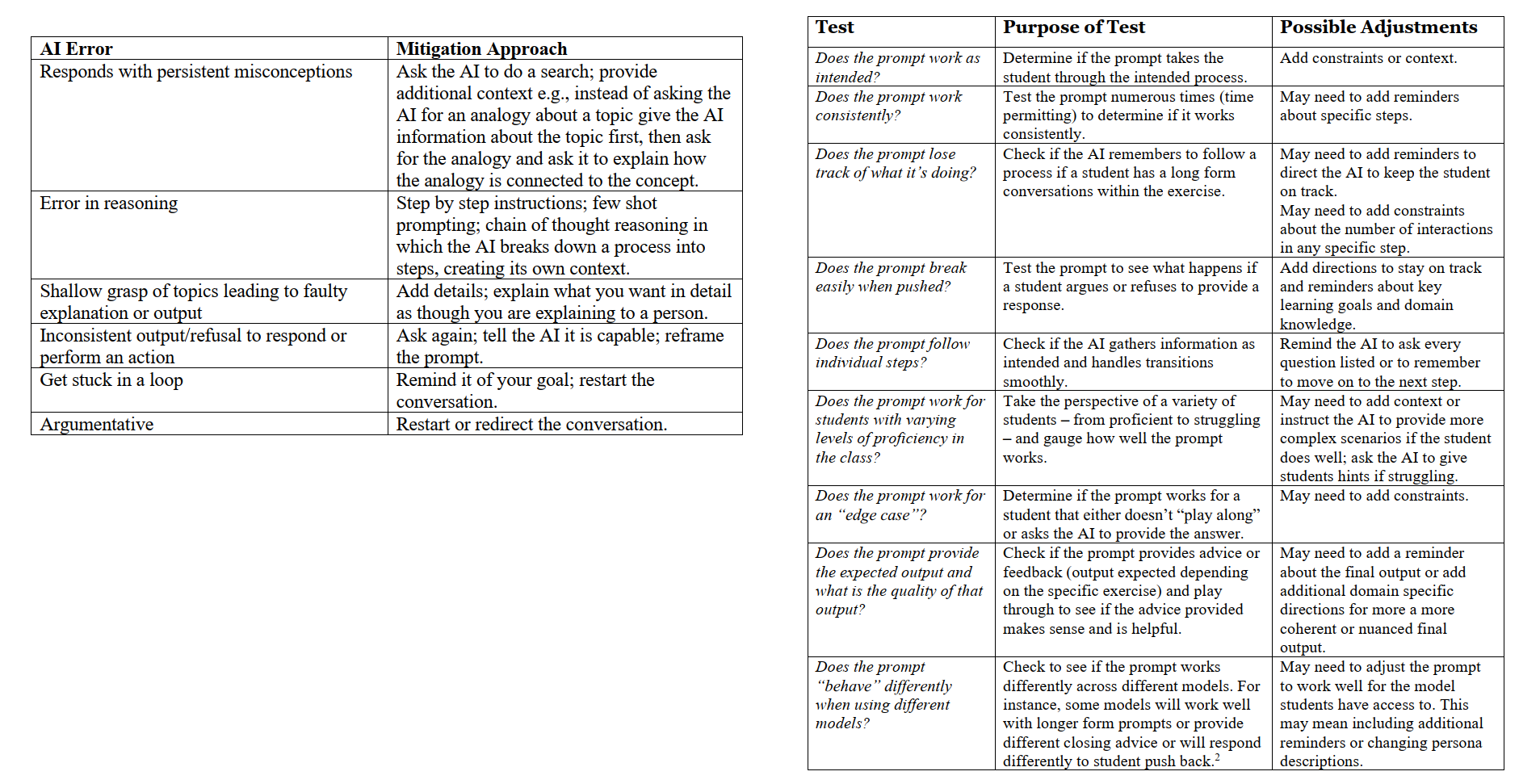As AI language models become more advanced and widely used, it's crucial to ensure your prompts are performing optimally. Just like any software, AI systems can encounter issues that lead to errors, inconsistencies, or undesirable outputs. The good news is that many of these problems can be diagnosed and mitigated with the right approach.
Ethan Mollick provided an excellent checklist for identifying common AI prompt issues and exploring potential fixes:
Let's dive into how you can use this resource to get your prompts back on track:
1. Identify the issue
The first step is to pinpoint the specific problem your prompt is encountering. The table lists several common AI errors like persistent misconceptions, faulty reasoning, shallow topic understanding, inconsistent outputs, getting stuck in loops, and argumentative responses.
2. Apply the mitigation approach
Once you've diagnosed the issue, refer to the "Mitigation Approach" column for suggested strategies to resolve it. For example, if your AI is responding with misconceptions, the recommendation is to provide additional context upfront instead of prompting for analogies first.
3. Test and validate
The right side of the table outlines various tests you can run to evaluate if the mitigation approach is working as intended. These tests cover aspects like consistency, trackability, edge case handling, output quality, personalization, and cross-model performance.
4. Make adjustments
Based on the test results, you may need to implement further adjustments like adding constraints, reminders, directions, domain knowledge or changing the prompt descriptions altogether.
This checklist-style approach is immensely valuable for prompt developers and AI product managers. Instead of guessing solutions, you have a systematic way to identify issues, apply proven mitigation tactics, test rigorously, and iterate until the prompts deliver the desired performance.
